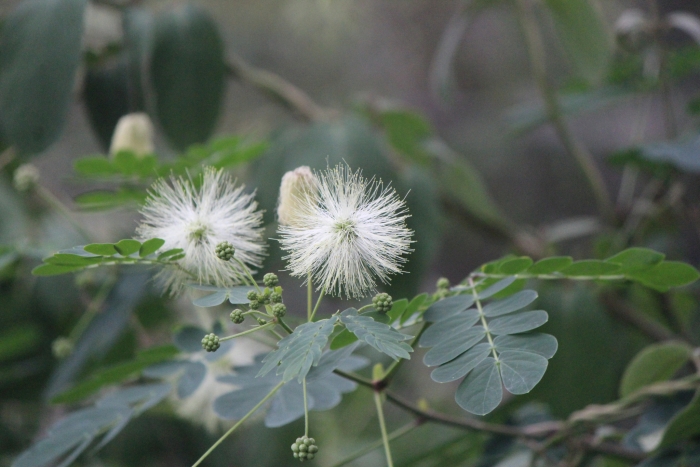White Zapoteca
(Zapoteca formosa)
White Zapoteca (Zapoteca formosa)
/
/

© José Belem Hernández Díaz
CC BY 4.0
Image By:
© José Belem Hernández Díaz
Recorded By:
Copyright:
CC BY 4.0
Copyright Notice:
Photo by: © José Belem Hernández Díaz | License Type: CC BY 4.0 | License URL: http://creativecommons.org/licenses/by/4.0/ | Uploader: belemqueuedelapin | Publisher: iNaturalist |





















Estimated Native Range
Summary
Zapoteca formosa, commonly known as White Zapoteca, is an evergreen subshrub native to tropical deciduous forests and arid scrublands in Mexico, Central America and South America. It typically grows to a height of 5-6 feet (1.5-1.8 meters) and a width of 2-3 feet (0.6-0.9 meters). The plant is characterized by its dense, green foliage and its showy, white, pompom-like flowers that bloom sporadically throughout the year, with a peak in late spring to early summer.
White Zapoteca is valued for its drought tolerance and its ability to thrive in a variety of soil types, though it prefers well-drained soils. It is often used in xeriscaping, as a border plant, or as an accent in tropical-themed gardens. Its ability to attract pollinators, such as bees and butterflies, makes it a beneficial addition to any garden. While it can tolerate part shade, it flourishes and flowers best in full sun. Gardeners should be aware that although it is generally low-maintenance, it may require protection from frost in cooler climates.CC BY-SA 4.0
White Zapoteca is valued for its drought tolerance and its ability to thrive in a variety of soil types, though it prefers well-drained soils. It is often used in xeriscaping, as a border plant, or as an accent in tropical-themed gardens. Its ability to attract pollinators, such as bees and butterflies, makes it a beneficial addition to any garden. While it can tolerate part shade, it flourishes and flowers best in full sun. Gardeners should be aware that although it is generally low-maintenance, it may require protection from frost in cooler climates.CC BY-SA 4.0
Plant Description
- Plant Type: Subshrub
- Height: 5-6 feet
- Width: 2-3 feet
- Growth Rate: Moderate
- Flower Color: White
- Flowering Season: Spring, Summer
- Leaf Retention: Evergreen
Growth Requirements
- Sun: Full Sun, Part Shade
- Water: Medium
- Drainage: Medium
Common Uses
Bee Garden, Border Plant, Butterfly Garden, Low Maintenance
Natural Habitat
native to tropical deciduous forests and arid scrublands in Mexico, Central America and South America
Other Names
Common Names: Schott’s Stickpea
Scientific Names: , Zapoteca formosa, Calliandra formosa, Anneslia formosa, Feuilleea formosa,
GBIF Accepted Name: Zapoteca formosa (Kunth) H.M.Hern.